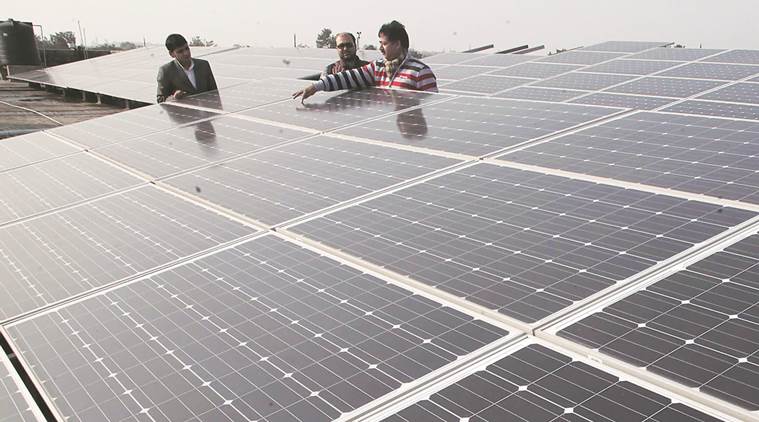Scaling-up India’s ambition, Prime Minister Narendra Modi announced a new program, Saubhagya Yojna, to electrify all rural and urban households by December 2018. The new program aims to deliver on a long-promised aspiration for many Indian homes—light. The program could also deliver on key priorities at the same time: affordable clean energy access, jobs, and combating climate change.
The Pradhan Mantri Sahaj Bijli Har Ghar Yojana, called Saubhagya Yojna, is a Rs.163 billion (US$2.5 billion) program that sets to electrify every willing household by December 2018, prior to the next Indian general election. Run by the Rural Electrification Corporation, the program will cover about 30 million households and will provide free power connections to poor families.
Key benefits of the program highlighted by the government are reducing harmful kerosene use; improving educational, health, safety and communication services; increasing job opportunities and; improving quality of life, especially for women. MNRE’s off-grid solar program links to the new Saubhagya Yojna program by promoting clean energy in remote villages.
Affordable Clean Energy Access
The new program, focused on providing grid access, is a big boost to millions in India without access to modern electricity. India’s clean energy market is growing rapidly with more than 13 gigawatts (GW) of installed grid-connected solar capacity as of June 2017, and record-low solar prices below Rs. 3.0 per kilowatt-hour (kWh) (~$0.04) for utility-scale solar. As recognized by the Prime Minister, India has moved from a scenario of power shortages to a power surplus, and increased clean energy in the grid.
However, distributed solar energy, in particular rooftop solar installations, are lagging far behind the national target, barely reaching 1 GW of the total 40 GW target. Off-grid microgrids for village application as well as battery storage, energy efficiency projects, electric vehicles are also underserved areas. For small-scale renewables, such as rooftop solar and off-grid, finance is a challenge. The market needs more investments by both government and the private sector. The cumulative investment in rooftop solar from 2013 to 2016 is a mere $0.6 billion, much lower than the needed $48 billion. The new program could work to bring in private finance for solar lighting, solar pumps and mini and microgrids in villages and increase affordable clean energy access.
More Jobs
With an average age of 27, India is one of the youngest countries in the world. Employment generation is a major priority, especially in villages. The new Saubhagya Yojna program is an avenue to provide new jobs through the workforce needed to install distributed solar energy systems and more, including lighting and solar pumps.
Analysis by the Skills Council on Green Jobs in partnership with NRDC and the Council on Energy, Environment and Water in New Delhi shows that clean energy creates jobs. “Greening India’s Workforce: Gearing Up for Expansion of Solar and Wind Power in India” shows achieving India’s solar target alone would create over 1 million job opportunities and employ more than 300,000 new workers in achieving India’s goals to install 160 gigawatts (GW) of solar and wind power by 2022. The greatest number of jobs are in construction and operation. Further, meeting India’s solar module manufacturing demand for this target domestically can provide employment for up to an additional 45,000 workers by 2022.
Clean Energy Targets
India committed to ambitious targets of 40% electricity-generation from non-fossil sources and a 33-35% reduction in emissions intensity by 2030 from 2005 levels, under the Paris Climate Agreement. India has also set targets of 100 GW of solar power and 60 GW of wind power by 2022 from the current 13 GW solar power and 32.5 GW of wind power.

With a focus on solar energy, the new Saubhagya Yojna program can work to achieve India’s clean energy targets. Achieving India’s clean energy targets is also central to fighting climate change. India is particularly vulnerable to climate change. This summer devastated communities with combined record-breaking temperatures and heatwaves with unprecedented rainfall levels, and the human and economic toll has been severe in India and across many cities. Climate change is increasing both the frequency and severity of extreme weather events like extreme rains, which can result in flooding and heatwaves.
The new Saubhagya Yojna program could usher in a wave of clean energy expansion to fight climate change and build healthier communities with less pollution—all while delivering the promise of light.
Source: https://www.nrdc.org/experts/anjali-jaiswal/energy-access-millions-india-2018


